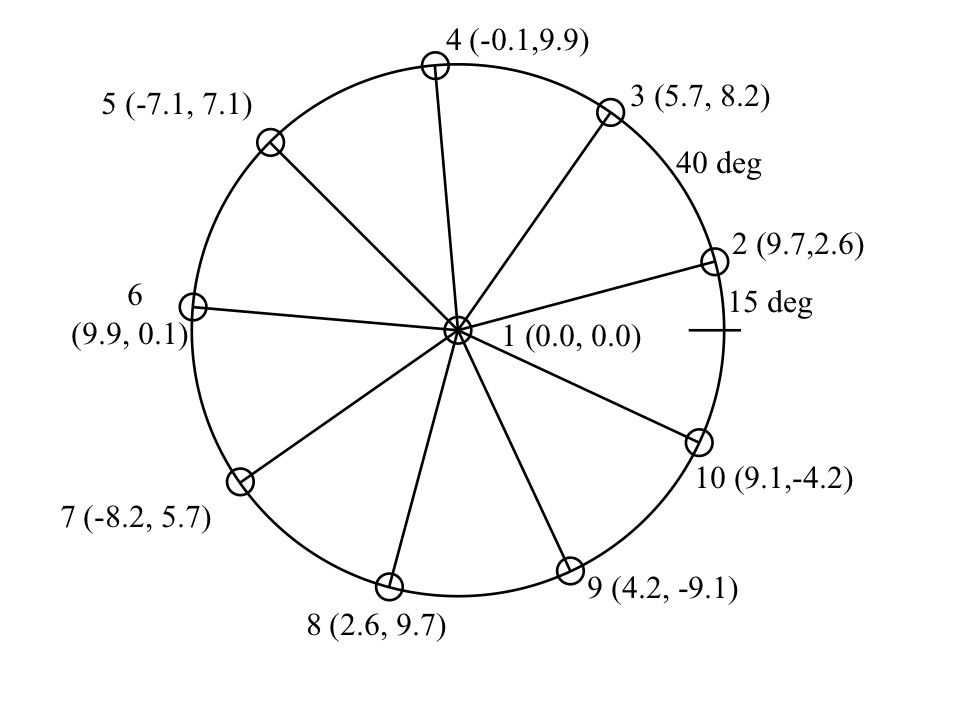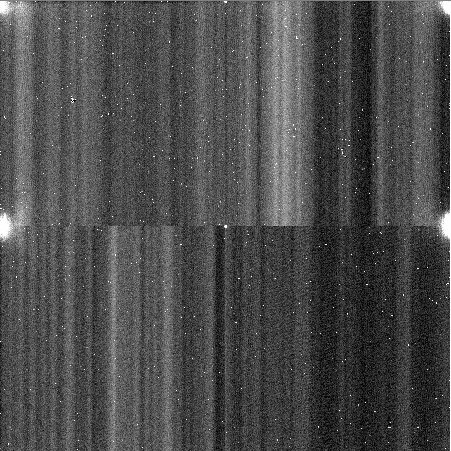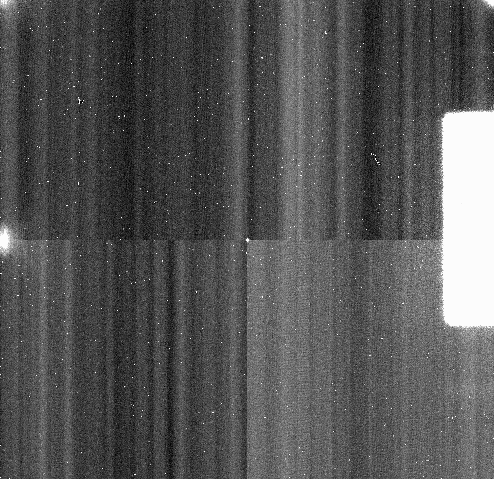ObserversManual のバックアップ(No.2)
- バックアップ一覧
- 差分 を表示
- 現在との差分 を表示
- ソース を表示
- ObserversManual へ行く。
- 1 (2019-09-12 (木) 19:49:50)
- 2 (2019-09-12 (木) 21:55:18)
- 3 (2019-09-13 (金) 19:19:43)
- 4 (2019-09-13 (金) 21:47:20)
- 5 (2019-09-17 (火) 14:40:44)
NIC Observers' Manual (STILL UNDER CONSTRUCTION)
Contents †
- Contents
- The simplest case (for impatience)
- Imaging observations (w/o polarimetry)
- Getting the status of NIC
- Start the Nayuta Telescope
- Log in to the NIC control PC
- Launch DS9 to view the images.
- Test exposure
- Open the cold shutter
- Retract the polarisation plate
- Point the telescope towards the target.
- Set the position angle of the FoV
- Test exposure to examine the acquisition
- Focusing
- Adjust the pointing offset (if needed)
- Take and check the imaging data
- 外部スカイフレームを撮る場合
- フラットフレームを撮る
- ダークフレームを撮る
- 観測の終わり方
- データ解析
- その他
- 変更履歴
Throughout this document, observers are assumed to log in to the host 'obs1' at the control room.
The simplest case (for impatience) †
- Point the telescope towards the target.
- Log in to 160.128.0.40 (nicpc) via ssh with the username=nicop
obs1% ssh -X nicop@nicpc
- Launch DS9 to view the images.
nicpc% ds9 &
- Run the observing command.
For the case w/o dithering, Mode 3, 5-sec exposure: nicpc% Lo 3 5
- The images are stored into the directory assigned to the observing date (e.g., /data/190912/).
Imaging observations (w/o polarimetry) †
Getting the status of NIC †
- The powers of NIC control PC, VME rack, analogue circuit are always ON, unless turned off in special occasions such as maintainance. If the powers are off, turn them all ON.
- The power of the motor-drive circuit is usually ON as well. Connect the power cable if the power is off.
- The power of the vacuum monitor can be turned OFF.
Start the Nayuta Telescope †
- Turn all the power switches of TCC ON.
- Launch the UCC (type 'ucc_run' from the console).
- Click the Near-IR observation mode button [近赤外線観測]
- Select the menu [観測補助]=>[観測開始] on the NIR-mode window.
- Many autoguider-related error messages will appear, but ignore them by clicking [クリア]=>[再開]=>[実行]
- Synchronise the enclosure with the telescope by clicking [同期]=>[実行] on the enclosure window.
Log in to the NIC control PC †
- Access the nicpc (160.128.0.40) from obs1 via ssh with X forwarding enabled.
obs1% ssh -X nicop@nicpc (from obs1) % ssh -X nicop@160.128.0.40 (from other computers)
- It is useful to launch another terminal on nicpc.
nicpc% xterm & nicpc% gnome-terminal &
...as you like.
- If you have just turned ON the VME rack, run the following command to initialise the read-out circuit.
nicpc% cg3_init
Launch DS9 to view the images. †
nicpc% ds9 -options-as-you-like &
You can optimise the sizes and configuration of the three images (JHK) by typing 'ds9set' after taking any mages (i.e., three images are aligned with scale=zscale, zoom=fit).
Test exposure †
nicpc% TL 3 2
- After some seconds, three images corresponding to J-, H- and K bands are displayed on DS9.
- The images may look somewhat unusual if you have just turned the power of the analogue circuit ON. Try 'TL 3 2' couple of times.
Open the cold shutter †
- Open the shutter with the following command on nicpc.
nicpc% darkshutter.py --open (turn the CLD on, and wait for 10 sec) (test exposure begins automatically) Type 'o', 'p', 'open', 'close', etc., following the prompt. Type 'q' if accept and quit.
- The power of the CLD is turned off automatically.
- (alternative way) You can also do the same thing manually as follows:
- Type the following commands to turn the CLD on, and open the cold shutter.
nicpc% ipmint.sh --on 3 (The status of IPPower is displayed. CLD's is connected to No.3) (Wait for 10sec) nicpc% shutter open
- If the counts are ~0, the shutter might be closed. If you find anything wrong, try the following commands to initialise the shutter and open it again.
nicpc% shutter -init
- When you confirm that the shutter is open, turn the power of CLD off by typing the following command.
nicpc% ipmint.sh --off 3
- Type the following commands to turn the CLD on, and open the cold shutter.
Retract the polarisation plate †
nicpc% pol out
Point the telescope towards the target. †
- You can use the UCC, or remote command on nicpc.
- NOTE: Sending the command from nicpc sometimes cause crash of UCC. We recommend to use UCC.
- If you use the remote command from nicpc, prepare the list of the coordinates.
- One object per line. The format should be "Object_name, Epoch, RA(HH MM SS.SS), Dec(DD MM SS.SS)"
(ex.) NGC2770 2000.0 9 09 33.709 +33 07 24.71
- Save the list to the file named, e.g., my_objlist, and type the following command.
nicpc% point2 my_objlist NGC2770
- One object per line. The format should be "Object_name, Epoch, RA(HH MM SS.SS), Dec(DD MM SS.SS)"
Set the position angle of the FoV †
- After you point the telescope, set the instrument rotator by clicking [視野回転]=>[AZ/EL同期]=>[実行]
- Input 0 to the PA to be set [指令位置角 in Japanese]=>[実行]. This makes the FoV always 'north is up'.
- The rotator can move only from -270 deg to +270 deg. Make sure not to rotate beyond this range.
- If you slue the telescope largely, cancel the AZ/EL synchronising before pointing, and then synchronise [AZ/EL同期 in Japanese]
- [実位置角 (current PA)] [指令位置角(PA to be set)] on the rotator window are PA on the sky (deg EofN).
- [実角度 (current PA)] [指令角度 (PA to be set)] in the [インストメンタルローテータ/カセグレン焦点] menu are instrumental PA relative to the telescope.
Test exposure to examine the acquisition †
- Type the following command on nicpc. See below for details.
nicpc% TL <mode> <exptime>
- <mode> means the read-out mode. For test exposure, the mode 3 is enough.
(ex.) test exposure with mode 3 and 10sec exposure: nicpc% TL 3 10
Focusing †
All the commands will run on nicpc. Note that they do not run on obs1.
- Estimate the coarse focus position with calfocus.sh command. This command gives just an empirical value. Just use it as a prior.
nicpc% calfocus.sh dome_temp(degC)
- Move the focus to the prior position using focus command.
nicpc% focus focus_position
- Take the images with several focus positions, measure the FWHM of a star, and fit a 2nd-order polynomial to the FWHM as a function of the focus position.
nicpc% autofocus exp_time band(秒) focus_start focus_end [num_sample]
- This procedure sometimes fails, due to the failure of measuremtns, or false detection of the star.
- In such case you should adjust the focus manually with focus command, refering to the plot generated by the autofocus command and so on.
- Example: The case with temperature=12.3degC
- Estimate the empirical focus position as a prior
nicpc% calfocus.sh 12.3 => Estimated focus: -5.3887
- Move the focus to the prior position. (You can also do this from UCC)
nicpc% focus -5.39
- Estimate the best position with autofocus command.
- Click the star to be measured on DS9 window.
nicpc% autofocus 3 j -5.5 -5.4 5
- In this case the focus is set to five positions between -5.5 and -5.45, take the 3-sec test exposure, estimate the best focus position of J band, and move the focus to the best position obtained here.
- See this page (Japanese) for details.
- Click the star to be measured on DS9 window.
- Estimate the empirical focus position as a prior
Adjust the pointing offset (if needed) †
- There are some gaps of the background counts between the four quadrants of the detectors. We recommend to avoid using the gap retions for photometry.
- The orientation, scale are as follows:
- If you set the PA to 0 deg, synchronising with AZ/EL, north is up and east is to the left.
- If you want to move the star rightwards on the image, set the positive offset along alpha.
- If you want to move the star upwards on the image, set the negative offset along delta.
- The FoV is 2.7arcmin * 2.7arcmin, and the pixel scale is 0.16 arcsec/pix.
- There are three ways to do this.
- Method 1: Use xyoffset2 command
- After test exposure (e.g., TL command), type the following command. The cursor on DS9 window will change to donut-shaped and blink.
nicpc% xyoffset2 (no arguments)
- Click the 'current position of the star (start)' on DS9 window, and then click the 'position to move that star to (goal)'.
- The offset between the start and goal is calculated, and the telescope is moved automatically.
- Confirm the offset by taking test exposure using, e.g., TL command.
- After test exposure (e.g., TL command), type the following command. The cursor on DS9 window will change to donut-shaped and blink.
- Method 2: Use the UCC
- Input the offset values (alpha, delta) into the [オフセット (offset)] fields on the [赤外線観測モード (NIR observing mode)] window, and click [実行] button.
- Method 3: Use the handset (not very useful)
- On UCC, click [ハンドセット]=>[有効]=>[実行]
- Press the [ENABLE] button. [MODE] should be set to [alpha/delta].
- Adjust the pointing with [CONTROL BUTTON]
Take and check the imaging data †
- Use Lo / DL command. If you just want to test and do not need to save, use TL command.
- Lo command
- No dither, take the specified number of frames.
- DL command
- With dithering, dither along the circle with specified radius, centred at the initial position.
- TL command
- Test exposire, without saving.
Lo command usage †
This command does not do any dithering, so that the same objects are detected at the same positions on the detector.
nicpc% Lo mode exptime(sec) [object_name [num]]
- object_name will be the OBJECT keyword value in the FITS header. OBJECT='TEST' is the default.
- num specifies the number of exposures to be taken. num = 1 is the defalt.
- (Example) Take 10 frames of NGC2770 with 30sec exposure and mode 3:
nicpc% Lo 3 30 NGC2770 10
- This gives 10 frames each for J, H and K, 30 FITS file in total.
DL command usage †
This command is for dithering observations.
nicpc% DL mode exptime [object_name [dith_num [dith_radius]]]
- dith_num specifies the number of dithering points. 10 is default.
- dith_radius specifies the dithering radius. 10 arcsec is default.
- (Example) Take 10 NGC2770 frames with mode 3 and 30sec exposure, dithered with radius of 10 arcsec:
nicpc% DL 3 30 NGC2770 10 10
- Dithering pattern is 'one at centre, nine along the circle with radius of 10 arcsec'.
- After finishing the dithering set, the telescope gets back to the original position.
- If you want to use the pipeline script 'nicred.sh' and take the separate sky frame, set the object_name to NGC2770_sky (i.e., object_name + '_sky').
- An example of dithering patter is shown below. This example has dith_num=10, dith_radius=10. The numbers in the parenthesises show the relative coordinates.
Read-out mode †
The mode is common parameter for all the observing commands (TL/Lo/DL), specifying how to read out the frame from the detector. The mode should be one of 3/4/43/44/83/84, i.e., (blank/4/8) for the first digit, and (3/4) for the second digit. (In short, mode 83 takes longer time, but gives lower noise level compared with mode 3)
- Outline
mode 3: Same exposure time for all JHK bands mode 4: Different exposure time for individual bands mode 43: Same exposure time, averaging over 4 times of Fowler sampling mode 44: Different exposure time, averaging over 4 times mode 83: Same exposure time, averaging over 8 times mode 84: Different exposure time (NOT all the three can be different), averaging over 8 times
- Limitations of the exposure time for each mode
- The exposure time cannot be shorter than the read-out time. The shortest exposure time for each mode is as follows:
mode 3, 4: 2 sec mode 43, 44: 8 sec mode 83, 84: 16 sec
- If you specify the different exposure times, the difference should be greater than the read-out time.
mode 4 : One exposure must be >2 sec longer than another. mode 44: One exposure must be >8 sec longer than another. mode 84: One exposure must be >16 sec longer than another. - For all modes, the exposure time cannot exceed 257 sec.
- The linearity of the detector is known to be degraded when the counts exceed ~8000.
- The exposure time cannot be shorter than the read-out time. The shortest exposure time for each mode is as follows:
- Brief description for mode 3 & 4
- Both modes performs CDS (Correlated Double Sampling).
mode 3
- Take the J-, H- and K-band images simultaneously with the same exposure time.
- Exposure and readout are done with the following scheme:
reset, x, read1, exposure, read2 reset: flash the detector signal to reset the frame x: readout the blank frameThe effective exposure is made between read1 and read2, and the resulting image is then given by (read2 - read1).
mode 4
- Take the three bands specyfying the individual exposure times. The example below is for exposures of 60, 40 and 20 sec for J, H and K.
nicpc% DL 4 60,40,20 NGC2770 5 (J=60, H=40, K=20sec, dither with radius of 5 arcsec)- Exposure and readout are done with, e.g., the following scheme:
reset, x, read1_jhk, exp1, read_k, exp2, read_h, exp3, read_jThe effective exposure is made between read1_jhk and read_h for H band, and the resulting H-band image is given by (read_h - read1_jhk).
- Brief description for mode 43 & 44
- Both modes require that the exposure is longer than 8 sec.
Mode 44 further requires that one exposure is longer than another by more than 8 sec.
- mode 43: Same exposure time for all JHK bands, averaging over 4 times of Fowler Sampling.
- mode 44: Individually specified exposure times, with the same readout as mode 43
- Both modes require that the exposure is longer than 8 sec.
Mode 44 further requires that one exposure is longer than another by more than 8 sec.
mode 43 (and mode 44)
- Exposure and readout are done with the following scheme:
reset, x, r1, r2, r3, r4, exp, r5, r6, r7, r8- The effective exposure is made between, e.g., the beginning of r1 and the beginning of r5, the resulting image is given by ( (r5+r6+r7+r8) - (r1+r2+r3+r4) ) / 4.
- Mode 44 does the same thing with exposure times individually specified for three bands.
- mode 83 (84)
mode 83: JHK同じ積分時間、Fowler Sampling、8回平均。
mode 84: 積分時間を個別指定する。ただし3つすべて違う時間にはできない。
Lo 84 120,90,60 NGC2770 4 はダメ、 Lo 84 120,120,60 NGC2770 4 はOK。 これらのモードでは最短積分時間16秒。mode 84 では2つの積分時間の差が 16秒以上ないといけない。 mode 83 では
reset, x, x, r1, r2, r3, ..., r8, exp, r9, r10, r11, ..., r16という流れでデータを取る。
外部スカイフレームを撮る場合 †
- 星が密集している領域ではセルフスカイフレームがうまく作れない場合がある。そのようなときは、対象天体にできるだけ近く、かつ星が少ない空域で、スカイフレームを撮る。
- nicred.sh で自動的に外部スカイを適用させるには、オブジェクト名を"対象天体名_sky"とする。
(対象天体) nicpc% DL 83 30 XYZ 10 10 (スカイ) nicpc% DL 83 30 XYZ_sky 10 10
フラットフレームを撮る †
- 通常トワイライト・フラットを用いる。
- カウントが10000程度を有意に超えると検出器がサチる。この直前くらいまでのフレームを使う。
- 検出器のパターンの影響を避けるため、高いカウント (~10000) のフレームと低いカウント (~数百) のフレームのペアを作る。それらの差分をフラットフレームとして使う。(実際にはカウント差が2000以上あればだいたい OK)
ダークフレームを撮る †
- 可能な限り、望遠鏡はEL=90度にする(装置の傾きにより、シャッターの移動距離が変わってしまうため)。
- EL=90度以外の向きでダーク撮像をするときは、検出器に光が入らないことの確認(下記参照)を、特にしっかりすること。
- シャッターを閉じる
nicpc% darkshutter.py
- これを走らせると、リニアドライブの電源が入り、シャッターの操作ができるようになる。
- 立ち上がるまで10秒待った後、自動的にシャッターが close ポジションに動く。
- テスト撮像 (TL) コマンドが走り、対話的にシャッター位置を調整できる。
- 下図は正しい位置にある場合。
- 下図はpol用の窓が写り込んでしまっている場合。この場合は open 側に少しずらす。
- テスト画像が表示された状態で、下記のコマンドを打って enter。
p [ステップ数] : POL の方向に動かす。デフォルトの移動量は200ステップ。 o [ステップ数] : OPEN の方向に動かす。デフォルトの移動量は200ステップ。 open : OPEN の位置に動かす。 close : CLOSE の位置に動かす。 pol : POL の位置に動かす。 init : 原点出しをする。 q : 画像を見て OK ならこれで抜ける。
- q を押して抜けると自動的にリニアドライブの電源が切れる。
- (参考) シャッターを手動で閉じる場合
- シャッターを閉じる
nicpc% ipmint.sh --on 3 nicpc% shutter close
- テスト撮像 (TLコマンド) して、検出器に光が入らないことを確認。
- 複数の露出時間で撮像し、Kバンドの画像内に、露出時間に応じてカウントが上がる領域がなければ、光(熱放射含む)は入っていないと判断してよい。
- 視野端 (顕著なのは左右端、上下象限の境目) には、シャッターが正しい位置に来ていても光が入ることがある。特に60秒以上の長時間露出をする場合は顕著。下図は120秒積分のダークフレーム。このパターンなら光は入っていない。
- 上の例では写っていないような、四角い窓のパターンが見える場合は、光が入っている可能性が高い。下図は Pol 窓が入ってしまっている例 (K band)。この場合はシャッターを open 側 (画像向かって右) に動かす必要がある。
- もし、光が入っている、すなわち、シャッターが正しい位置に来ていない場合は、以下の手順でシャッター位置を調整する。
- シャッター制御GUIを立ち上げる。
nicpc% shuttergui &
- GUI の steps の下のバーをスライドさせて、動かすstep数を選択。初めは1000程度がおすすめ。
- "To open" (open位置の方向に動く)か "To pol"(pol位置の方向に動く) ボタンを押し、シャッターを微動させる。
- TLコマンドでテスト撮影し、光が入らないようになったか確認する。
- まだ光が入っているのであれば、光が入らないようになるまで、シャッター微動 & テスト撮像を繰り返す。
- 完了したら下記のコマンドでリニアドライブの電源を切っておく。
nicpc% ipmint.sh --off 3
- シャッター制御GUIを立ち上げる。
- 複数の露出時間で撮像し、Kバンドの画像内に、露出時間に応じてカウントが上がる領域がなければ、光(熱放射含む)は入っていないと判断してよい。
- ダーク撮像(本番):
- 解析に自動処理スクリプト(nicred.sh)を使う場合は、天体名を"DARK"とする。例えば:
nicpc% Lo 3 20 DARK 15
- 読み出しモード・積分時間は、天体画像と揃える。
- nicpc には、最後のシャッター open も含めて自動でダークフレームを撮るスクリプトが用意してある。2019年5月現在、最後のシャッターopenは入れないようにしてあるので注意
nicpc% darkscript.sh
- 当日のデータから積分時間を読み取り、それに合わせたダークを取得するスクリプトができる。
- ダーク取得前には、必ず手動で shutter close をした後テスト撮像をする。シャッターが正しい位置にあることを確認してから、生成されたシェルスクリプトを以下の通り走らせる。
nicpc% /home/nicop/obs_script/DARK[日付].sh (スクリプトの名前は、darkscript.sh 実行後に表示される)
観測の終わり方 †
シャッターは open 、半波長板は退避 †
nicpc% darkshutter.py (撮像テストで確認、open と打ち込む) (撮像テストで確認、問題なければ q と打ち込む) nicpc% pol out
- このシャッター open 操作は、前項のダーク取得スクリプトを流して帰る場合には必要ない。
- ただし、途中で止まっていた場合に備えて、翌日以降の観測者はまずテスト撮像から始めることを推奨する。
NIC PC からログアウト †
ds9, xterm (kterm) を閉じて、
nicpc% logout
- この操作は、ダーク取得スクリプトを流して帰る場合には、翌日のダーク取得完了後に行う。
望遠鏡をかたづける †
帰る前に... †
データ解析 †
- 基本的な解析の手順は、下記にまとめてある。
その他 †
画像データの保存場所 †
取った画像データは、NIC制御PCの /data/110730/rawdata/ などのディレクトリの 下に、順番に番号をつけて保存される。(TL コマンドで取ったデータは保存されない) ファイル名は例えば k110730_0035.fits などになる。 日付のディレクトリは画像を取ると勝手に作られる。夜中12時を過ぎても、翌朝 8時になるまでは前日の日付のディレクトリが使われる。夜中の3時ごろから 観測を始めても前日の日付になるので注意。
注意点 †
- 撮像を途中で止めたいとき
nicpc% DL 84 60,60,30 NGC2770 10 10
などとやったが、何かの理由で途中で止めたくなった場合、別の端末ウィンドウからnicpc% xstop
と入力すると、運が良ければコマンドが停止するかもしれない。 ただし現在進行中の積分はそれが終わるまで止まらない。
- UCCが落ちている場合のエラー表示
なゆた望遠鏡統合制御システム(UCC)をシャットダウンしたあとにダークフレームを取ったりしていると ERRORの表示が出る。これは望遠鏡と通信ができなくなったためで、FITSヘッダ の情報が欠けるかもしれないが、画像データ自体は保存されるはず。 どうしてもうっとうしい場合は
nicpc% telescop statusとするとエラー表示は出なくなるはず。後で
nicpc% telescop controlとしておかないと次の観測で望遠鏡と通信しなくなるので注意。 dark というコマンドを作って(実は今も暫定版があるが)その中に 入れておくという手もある。
変更履歴 †
- 20110730 禅野: 新規作成(nic_observe.txt)
- 20120502 高橋: なゆた立ち上げ(詳細)を追加
- 20120516 高橋: wiki化
- 20120517 高橋: 露出時間制限の変更を反映
- 20120628 高橋: 「観測の終わり方」を追加
- 20120704 高橋: ネットワーク構成の変更に伴い、ログイン方法を変更
- 20130316 高橋: マシン名を用いたログイン方法を追加
- 20180212 斎藤: 全面更新
- 20180312 高橋: シャッター復旧を反映
- 20190518 斎藤: リニアドライブの電源 ON/OFF を自動化した手順を追加


